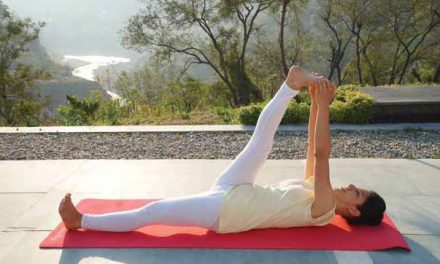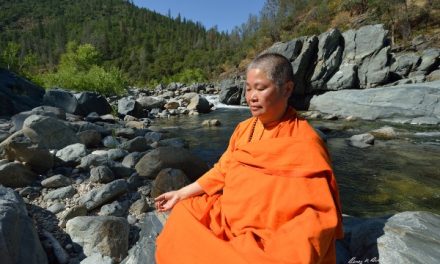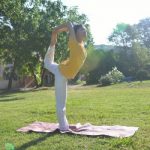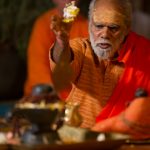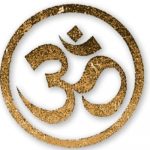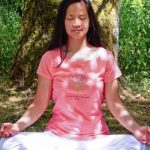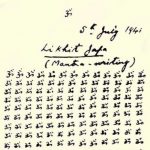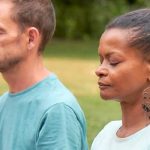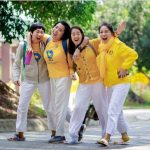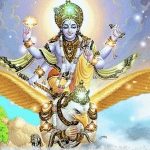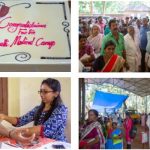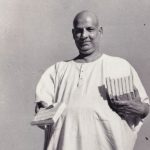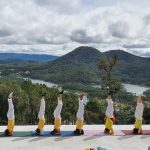Hatha Yoga Sadhana
Excerpt of a talk by Swami Vishnudevananda
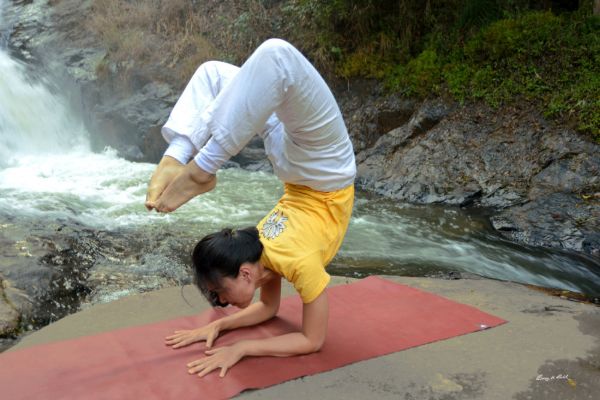
Hatha Yoga Pradipika
Modern hatha yoga has developed and expanded from Hatha Yoga Pradipika, one of the original treatises on hatha yoga written in the fifteenth century by Sage Swatmarama. The name Swatmarama means “he who is sporting in his own atman.” We on the other hand, are bhogaramas, because we are sporting in our own senses!!!
There are three other classical treatises on hatha yoga: Siva Samhita, Gherandha Samhita and Goraksha Samhita. They are all within the tradition of ashtanga yoga (the eight-limbed yoga, raja yoga) of Patanjali’s Yoga Sutras. Hatha yoga, kundalini yoga, laya yoga and mantra yoga are all related to ashtanga yoga. They differ a little only in approach. Of the eight steps of ashtanga yoga, yama and niyama are common to all these yogas.
In his Yoga Sutras, written around 500CE, Patanjali describes only one asana, saying only that sitting in a steady and comfortable pose for meditation is asana. He did not elaborate beyond that because cultural poses were an integral part of daily life, practised only so the body could be steady for meditation.
Gurukula System
Under the gurukula system of education, a student would live under the guidance of the guru, the teacher for ten to twelve years. The teacher might have thirty or forty students. He would have a little plot of land, simple accommodations and a few cattle for their livelihood. The students would help in cultivating the land and looking after the animals. In return the teacher would impart his spiritual knowledge. This knowledge included asanas and pranayama; they were given to all, beginners as well as advanced students.
Also with pranayama, Patanjali only says this much: that regulation of inhalation and exhalation is pranayama, its purpose to reduce the velocity of the mind. Other pranayama techniques—anuloma viloma, bhastrika, ujjayi, surya bedha—were practised as part of the gurukula daily routine. Every child had to perform pranayama along with repetition of the gayatri mantra and so Patanjali felt no need to elaborate. Only later on, a thousand years later, when lives had become less disciplined and the gurukula system was in decline, then at that time Sage Swatmarama introduced his treatise on hatha yoga outlining in more detail the asanas and pranayamas.
In addition hatha yogis elaborated on the regulations concerning cleanliness, not only by cleaning the teeth and the rest of the body, but by going even deeper—cleaning the nasal passages, the stomach, etc. And even further, into advanced cleansing techniques for the subtle body, pranayama using the bija (seed) mantras of the elements. Thus, the bija mantra of earth is Lam; Vam of water, Ram of fire; Tam of the moon. Gross matter of any kind is called earth, any liquid is water, any heat is fire, and any energy that cools the body and brings purification is called moon or nectar. By using these bija mantras the elements which make up the human organism are actively purified.
Patanjali on the Mind
With regard to the mind Patanjali says in the Yoga Sutras, yogas chitta vrtti nirodhah, Yoga is stilling the mental modifications of the mind. He does not say how to achieve this mental state except through stopping the mind. Elaboration comes from Swatmarama in the description of bandhas and mudras, practices that force the prana to move into the sushumna causing the mind to become still. This also would have been an integral part of the gurukula training system.
Patanjali expands the practices of controlling the mind to describe samyama, a process of deepening mental control through concentration, meditation and samadhi. By practising samyama on any object or concept, knowledge of that object is attained. For example if you practise samyama on the bija mantra Lam, in the muladhara chakra, representing the earth element, then you will have knowledge, and with that comes power, of material things. Raja Yoga explains the theory, hatha yoga puts it into practice.
The intensive sadhana described in the Hatha Yoga Pradipika is almost the same as the activities I performed when I was in the Himalayas undergoing my own training. With Gurudev’s grace and with His blessings, I went to Uttarkashi and followed this same programme. Morning, midday, evening and midnight I practised pranayama, asanas, bandhas, plus about 200 malas of mantra, taking about three or four hours.
I had hardly two or three hours of sleep each night, but that was sufficient for the body. It needs little sleep because intense energy starts flowing. All asanas, pranayama, bandhas and mudras end in kevala kumbhaka,—when there is suspension of prana in the ida and pingala nadis so that the prana moves only in the sushumna—and eventually in unmani avastha, the state where there is no duality.

